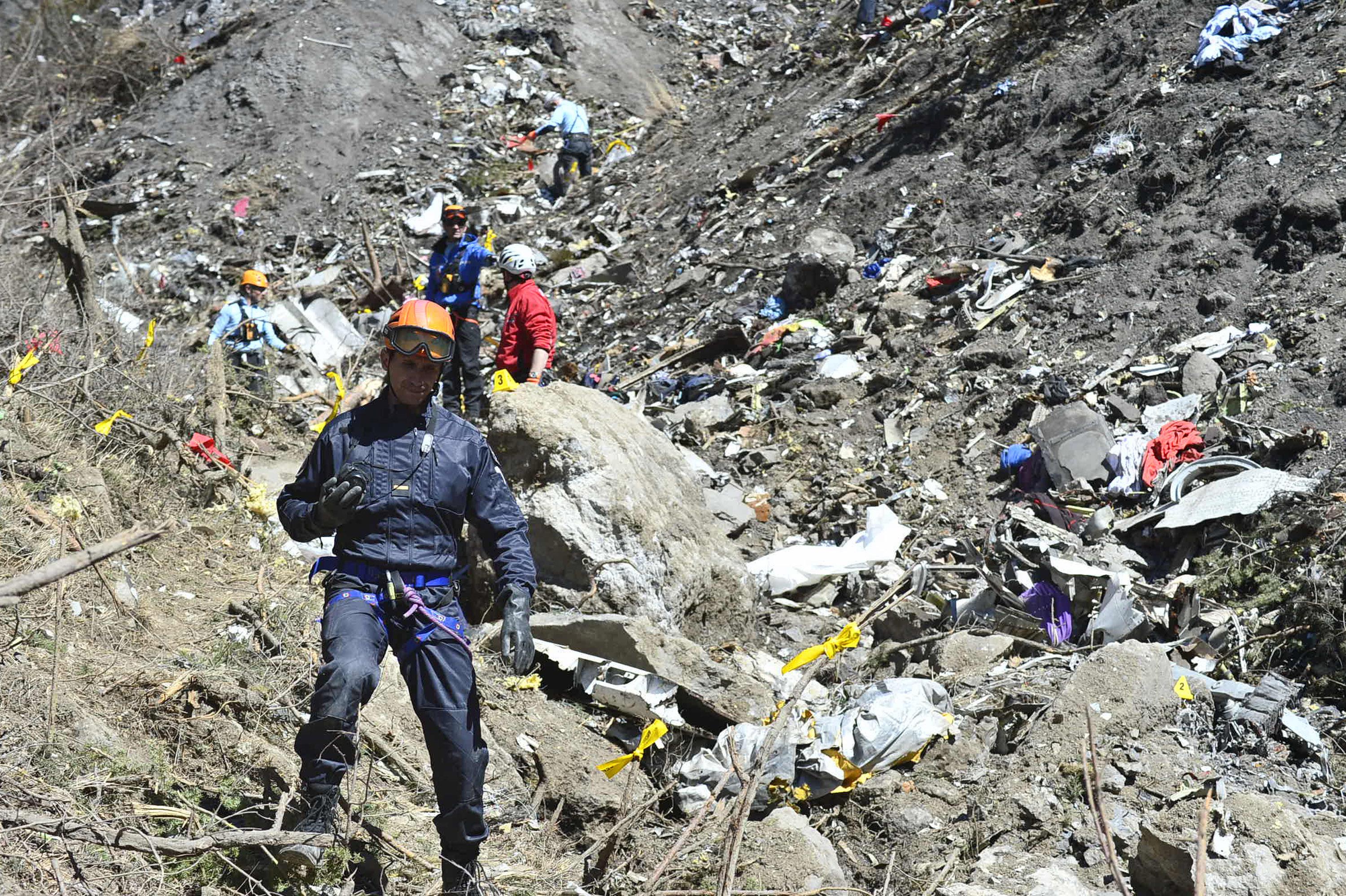The initial evidence suggests that the first officer of Germanwings Flight 4U 9525, a 27-year-old German named Andreas Lubitz, locked himself in the cockpit and flew the plane into the ground, deliberately killing himself and the 149 others on board. It’s hard to overemphasize how unusual this is—nothing like this has ever happened aboard a European or North American carrier before—but it’s not totally unprecedented. Around the world, a number of pilot-suicides have taken place in recent years, including one that bears uncanny similarities to Tuesday’s crash.
At 11:26 a.m. on Nov. 29, 2013, LAM Mozambique Airlines Flight 470 took off from Maputo, Mozambique bound for Luanda, Angola with 27 passengers and six crewmembers. LAM is not a great airline—it’s been banned from flying in Europe—but the plane, an Embraer E-190 narrowbody, was nearly new, having been delivered to the airline just the year before. About halfway through the flight, shortly after 1 p.m. local time, the plane was passing over Botswana when the co-pilot left his seat to go to the bathroom.
Left alone in the cockpit, the captain, Herminio dos Santos Fernandes, locked the door and changed the autopilot altitude setting from 38,000 feet to 592 feet, which happened to be lower than the elevation of the terrain in that region. He also deployed the plane’s spoilers, which protrude from the wing to reduce lift and make the plane descend more quickly. Over the next eight minutes, the plane descended at about 6,000 feet per minute, somewhat faster than Germanwings 9525 but considerably more slowly than SilkAir Flight 185, whose pilot put the nose down and flew the plane into the surface at tremendous speed.
The Cockpit Voice Recorder picked up sounds of shouts and banging on the cockpit door as the first officer struggled to gain access, to no avail. The plane crashed into a swamp in Namibia’s Bwabwata National Park amid heavy rain in an area so remote that it took recovery teams 24 hours to reach it. Due to dangers posed by roaming lions, the search team was armed with rifles.
The force of the impact clearly had been tremendous: Only one body was recovered intact. “There is no plane. There are just pieces of metal scattered around,” an official declared.
To this day, the motive for the pilot’s actions remain unclear, though rumors have circulated online that he was struggling with domestic problems. Mozambique has still not issued a final report on the crash. Yet what little we do know about the case does line up eerily with what little we know so far about the Germanwings crash: the perpetrator who waits until he is left alone in the cockpit, then appears to lock his colleague out; the use of autopilot to command an orderly descent down into the ground; the resulting high-speed crash that leaves the aircraft ripped to shreds, without the slightest possibility of survival.
An air of mystery surrounding the incident is not unusual in cases of what appear to be pilot suicides. Such a horrific act, in which an individual not only takes his only life but slaughters the passengers who have been put into his care, defies easy psychological classification. Suicide notes are rare, as are words of explanation on cockpit voice recorders. With the pilot dead, and the scene of the crime destroyed, all that remains is the unsolvable riddle: Why?
